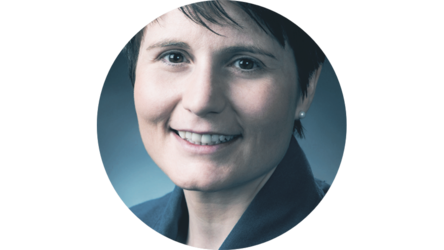Help ESA redefine the future of space computing
Due to the growing volume of data produced by Earth observation (EO), traditional computing architectures struggle to process information efficiently and promptly. To mitigate this issue, prepare Europe for the future of space computing, and grow from Earth observation into Earth action, ESA is seeking innovative mission concepts that use disruptive computing paradigms, potentially coupled with matching sensing technologies that could either bring new capabilities for Earth-orbiting satellites, or significantly improve current mission constrains.
Through its Technology Vision 2040 and Strategy 2040, ESA aims to advance technologies and missions which will allow us to provide actionable and rapid response to environmental changes and natural disasters and mitigate pressures on natural resources. EO satellites play a key role in reaching this objective by providing the data needed to make sense of the complexities of our planet. Yet these satellites are currently limited in terms of speed, efficiency and energy consumption.
Artificial intelligence (AI) and novel computing paradigms such as quantum, photonic or neuromorphic computing have the potential to transform space-based applications by dramatically increasing mission autonomy and decision making without humans. To consolidate Europe's position as a leader in sustainability and remote sensing, ESA is launching the new SysNova challenge "Innovative mission concepts enabled by disruptive computing paradigms".
"We are living in a very exciting time in history, at the dawn of the next industrial revolution, where artificial intelligence is becoming capable of solving complex reasoning tasks. Launching this campaign now will lay the foundation for the next generation of European space missions, enabling them to operate more autonomously and deliver critical data with less reliance on human intervention", says Iga Szczesniak, Space Innovation Engineer and one of the two ESA managers of this campaign.
Filling the gaps

The call builds on multiple past and ongoing initiatives at ESA. "Through missions like Φ-sat, OPS-SAT, and initiatives such as 3CS, ESA has explored the benefits of embedding intelligence in orbit. In parallel, disruptive paradigms like quantum and neuromorphic computing have shown potential to enhance processing of vast amount of data efficiently. Yet, few have examined how these technologies could redefine entire missions. It's time to take that next step", says Gabriele Meoni, ESA Innovation Officer and one of the campaign managers.
This call for mission proposals will build Europe's capability for next-generation missions that can handle complex data, and function with greater autonomy, efficiency, and intelligence, enhancing Europe's place as a leader in sustainability and remote sensing.
Send us your disruptive ideas
ESA is looking for high-risk, high-benefit mission concepts, built using technologies that are expected to be accessible within the next three years. "We aim to see innovative system studies and mission architectures that enable new applications, improve mission trade-offs, or solve current bottlenecks. If you are conducting disruptive research at the intersection of computation and space, we would love to hear your perspective on how to better connect these fields in the context of a mission", says Iga.

The call runs through SysNova, ESA's technology assessment scheme that promotes joint studies between academia and industry. "We want to spark ideas that could yield transformative benefits for current missions or enable novel applications in Earth observation and beyond, with the ambition to translate these concepts into in-orbit demonstrations within the next few years", adds Gabriele.
Teams can submit their mission proposals on the Open Space Innovation Platform (OSIP) until 14 September 2025. The primary mission focus is Earth observation; however, missions focused on secure satellite communications, enhanced connectivity, and other mission-critical operations will also be considered.

The challenge focuses exclusively on upstream applications, at the platform or payload level on board of the spacecraft. Ideas for ground segment level applications might be taken into considerations only if they offer proven and significant improvements for the mission concepts.
Up to five ideas will be selected for a six-month study with a budget of € 100,000 each. At the end, the winning study will be awarded a session at the Concurrent Design Facility (CDF) for further development.
This SysNova challenge is a part of ESA's Preparation activities. Additional details, processes and conditions for the campaign can be found here.















 Germany
Germany
 Austria
Austria
 Belgium
Belgium
 Denmark
Denmark
 Spain
Spain
 Estonia
Estonia
 Finland
Finland
 France
France
 Greece
Greece
 Hungary
Hungary
 Ireland
Ireland
 Italy
Italy
 Luxembourg
Luxembourg
 Norway
Norway
 The Netherlands
The Netherlands
 Poland
Poland
 Portugal
Portugal
 Czechia
Czechia
 Romania
Romania
 United Kingdom
United Kingdom
 Slovenia
Slovenia
 Sweden
Sweden
 Switzerland
Switzerland


























